How To Install A Bow Window
How to Install a Bow Window
How to frame a rough window opening, install a new window, trim out the interior and exterior around a new window, plus all of the finishing.
 Family Handyman
Family Handyman
We'll walk through the steps needed for bay window construction, which will give your room a lot of natural light and a spacious feel. The new window will also update the look of your house. Framing and installing the new window may seem like a daunting task, but if you're an ambitious do-it-yourselfer, you can handle the job successfully by following our detailed instructions and how-to photos.
You might also like: TBD
- Time
- Complexity
- Cost
- Multiple Days
- Advanced
- $501-1000
A project that's as easy or difficult as you want it to be

Before photo
How the room looks before the bow window is installed.
Replacing an aging picture window with a new bow window produces lots of benefits. It provides better ventilation, better views and better comfort. It updates the look of your house, both inside and out. And it provides a great place for your cat and plants to sunbathe.
But what I like most is the way a bow window makes a room look and feel larger—even though the "bulge" adds just a few square feet. They're a great addition to a living room, dining room or family room, and have a particular knack for making a cramped eating nook feel roomier.
The steps for installing a bay window—one that juts out farther, usually at a 30- or 45-degree angle—are nearly identical to those for a bow window. In fact, the first part of this article provides the basic steps for installing any window.
How tough is this bay window construction project? Well, to some extent, you get to choose. If the thought of bracing up and tearing into your house to install a new header (Photos 3 and 4) is daunting, buy a window that's the same size as or slightly smaller than the existing one. You won't need to tackle the major structural work, making this a project a confident beginner can do. Creating a new opening for a taller window isn't that much more difficult; you simply lower the sill by shortening the cripples (Photo 5).
But if you widen the opening (and add cabinets and a window seat as we did), the project becomes more challenging. You'll be tackling both brawny rough carpentry work and detailed finishing work, perhaps even rerouting heat ducts and electrical wiring. You'll need to be comfortable handling power tools and allot plenty of time to finish the project. Our bow window was 6 in. wider and 4 in. shorter than the picture window it replaced, so we took the hard route.
Either way, formulate a game plan so you can pull out your old window and get the new window installed in the opening in a single day. This means having the room cleared out, temporary support wall (if necessary) in place, tools and materials at the ready, new window on site and helpers lined up ahead of time. You don't want to lie awake in bed at night wondering if hail, bats or the boogeyman will be crashing through flimsy plastic stapled across an unfinished opening.
Remove the old window
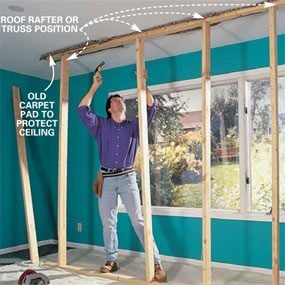
Photo 1: Build a support wall under the ceiling joists.
Install a temporary support wall 2 to 3 ft. from the exterior wall. Position studs directly under each truss or ceiling joist. Turn off power to any outlets or switches in the wall.

Photo 2: Cut through the finish nails to remove the window.
Cut through finish nails securing the window using a reciprocating saw. Cut back the siding with a circular saw if necessary to expose the nailing fins that hold the window in place. Remove the window.
You'e going to make a dusty mess, so move the furniture out, seal up the ducts, lay down a dropcloth and cover the doorways with plastic. If you're installing a larger header for a wider opening, you'll need a building permit. Some inspectors will help you determine the correct header size; others will require calculations from a structural engineer—especially for openings exceeding 8 ft.
If you're installing a larger header, build a temporary support wall (Photo 1) 2 ft. back from the existing wall. Carefully pry the interior molding from around the window with a flat bar, then set it aside. You may need to reuse it, since some older moldings are difficult to match. Use a reciprocating saw to cut through any finish nails that secure the window jamb to the window opening (Photo 2).
Use a pry bar to remove the trim or brick mold that surrounds the window outside and helps hold it in place. Be careful; sometimes your window will come out along with it. If your window is metal or vinyl clad, built-in nailing flanges may be securing it to the exterior sheathing and framing. If removing the exterior trim doesn't give you access to these nails, use a circular saw (Photo 2) to cut back the siding 2 in., then remove the nails with a flat bar. With the help of your spouse, neighbors and kids, remove the window.
Brick, stucco and other types of siding present their own unique challenges. Cut back or remove only as much of these materials as necessary to get the old window out and the new window in. You can try to patch gaps between the edges of the window and the remaining siding, brick and stucco with like materials, but getting an exact match can be difficult. Filling gaps with wide trim boards is often lots easier.
If you're installing a larger header, shut off power to all electrical outlets and switches in the wall, then remove the drywall or plaster. We removed everything "down to the studs" along the entire wall; it's easier to fit and tape all new drywall or plaster, corner to corner, than to match the thickness and textures of the old and the new. It also allowed us to upgrade the insulation and install cable and a new telephone line.
Tip:
Your temporary support wall can do double-duty; staple plastic to it to help contain the debris and dust.
Framing a new rough opening

Photo 3: Remove the studs next to the window.
Remove the drywall or plaster, then the framing that formed the old window opening. Use a reciprocating saw to cut through nails securing the exterior sheathing to the framing. Use a BIG sledgehammer to bash the studs and trimmers away from the header, then use a BIG pry bar-a 3-ft. one gives you lots of leverage-to pry the old header down and away from the top nailing plates.

Photo 4: Set the new header in place.
Nail the new cripples to the bottom plate using 16d nails, then cut and nail the new sill in place. We "sistered" longer cripples alongside existing ones to create the correct opening height. If your new window is taller, you'll need to cut the cripples shorter.
Use a sledgehammer to knock the king studs and trimmers away from the ends of the existing header (Photo 3). If sheathing and siding nails are attached, cut through them with a reciprocating saw or yank them out with a "cat's paw" nail puller. Remove the sill, too. Determine the window rough opening width. Manufacturers list the rough opening height and width with each window. Ours was 100-3/8 in., so we cut our headers 106-3/8 in. long—6 in. longer to accommodate the two pairs of 2×4 trimmers (Photo 6).
Toenail the new king studs and one trimmer to the top and bottom nailing plates using 16d nails and install the two header members (Photo 4). Toenail the top of the header into the top nailing plates, then add the second trimmers.
Determine the rough opening height, then "sister" new cripples alongside the existing ones to raise the sill height (Photo 5) or cut them shorter with a reciprocating saw to lower it. Nail the sill to each cripple and to the trimmers on each side. We installed two sills to solidify the large opening and support the window.
Rally your neighbors to hoist in the new window
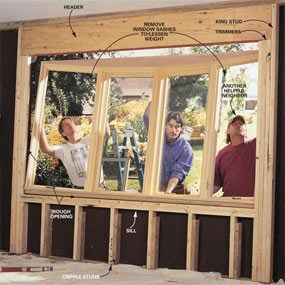
Photo 6: Set the new window in place.
Lift and position the new window into place

Photo 7: Use scraps of wood to support the window.
Use sawhorses, blocks and shims to temporarily support the window.

Photo 8: Shim the window to make it level.
Level the windowsill with shims every 16 in. Move the window in or out until the extension jamb is even with a scrap of material the same thickness as the finished wall. Use your 4-ft. level to make certain the sides are plumb and the window square, then install shims every 16 in. Drive 10d finish nails through all the shims to secure the window in the rough opening.
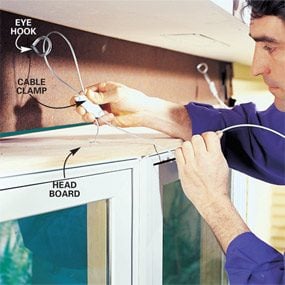
Photo 9: Hold the window in place with support cables.
Use cable clamps to tighten the support cables around eye hooks screwed firmly into the header. If space over the window is limited (our manufacturer wanted a minimum 30-degree cable angle), secure the cables to eye hooks screwed into the overhanging rafter tails or blocking nailed between the tails.
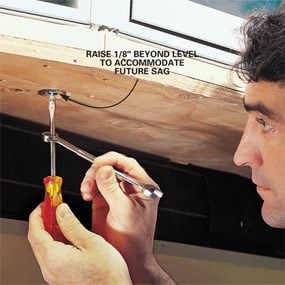
Photo 10: Level the footboard by turning the adjustment nut.
Tighten the adjustment nut on the bottom until the footboard is level or slants slightly upward (about 1/8 in.), to compensate for cable stretch. Do it right; once the bottom of the window is insulated and sheathed, the nuts will be inaccessible.
Rustle up your neighbors again and lift the new window into the rough opening (Photo 6). Temporarily support the window (Photo 7), then on the inside, use a flat bar to center the window in the opening from side to side. Shim and level the footboard (Photo 8). Next, use the level and shims to plumb and straighten the side jambs.
Shim the top straight and level too. When all four sides are level, plumb, square and straight, drive 10d finish nails through the extension jambs and shims into the framing. Take your time. Since bow windows extend beyond the exterior wall, they need added support (Photos 9 and 10). Our Pella window came with two preinstalled cables running from the bottom of the footboard up through the headboard. If space is limited above the window, secure the cables to the rafter tails or to blocking that's securely nailed between the rafter tails.
Tip for bay window construction:
Remove the operable window sashes to lighten the weight, especially if you're working off ladders.
Trim the exterior carefully—so the window doesn't look "stuck on"

Photo 11: Trim the window bottom.
Enclose the window bottom. Use big-head, plastic cap nails to secure 2-in. rigid insulation to the footboard, then secure the 3/4-in. plywood by driving 3-1/2 in. drywall screws through the insulation and into (but not through!) the footboard. Use 4d galvanized nails to secure the soffit plywood to the 3/4-in. plywood. Keep the edges of all three layers even with the edges of the window.

Photo 12: Mark the window profile on the soffit.
Use a level to transfer the profile of the window up to the soffit, then make marks 1/2 in. back and secure 1×2 cleats to those marks. Add fiberglass insulation to the cavity. If the distance from window top to soffit is less than 6 in., you can enclose the top with the same metal flashing shown in Photo 15.
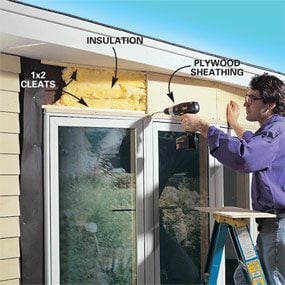
Photo 13: Trim out above the window.
Screw 1/2-in. plywood to the cleats. Since we enclosed one of the existing soffit vents, we added another one to the left of the bow window.
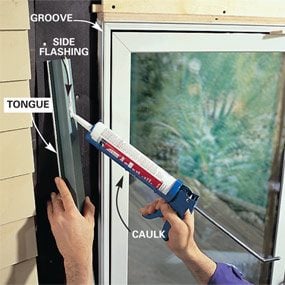
Photo 14: Caulk and install the flashing.
Apply caulk to the back of the side flashing, then tap the tongue of the flashing into the groove of the window. Prevent damage to flashings by hammering against a wood scrap.

Photo 15: Set the bottom flashing in place.
Install the bottom flashing. First hold the flashing in place, mark the corners and lightly pre-bend the flashing to accommodate the profile of the window. Secure it into the bottom groove of the window using a tapping block. Caulk the seam between the bottom and side flashings.
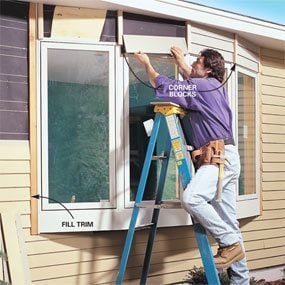
Photo 16: Nail the trim and siding in place.
Install the exterior trim and siding. Above the window we nailed corner blocks over the seams and filled between them with lap siding. We cut cedar lengthwise for trim alongside the window. Rather than filling in the wide space on the left side with short pieces of siding, we removed the siding back to the corner of the house and installed full length pieces.
Bay window construction:
The closer you match the exterior details to those of the existing house, the more natural the window will look. Since every house is a little different, your exterior trim details will almost certainly vary from ours, especially if you have brick, stucco or vinyl siding. But the same general steps still apply.
Begin by insulating and enclosing the bottom (Photo11). Hold your 3/8-in. plywood soffit material to the underside of the window, trace the profile onto it, then use a circular saw to cut it to shape. Use this as a pattern to cut the 2-in. rigid insulation and the 3/4-in. plywood nailer. Make sure the edges of all three layers are even with the edges of the bow window as you install them. After enclosing the top (Photos 12 and 13), install the side and bottom flashings (Photos 14 and 15). If the top of your window is within 6 in. of the soffit, you can insulate it, then enclose it using the same flashing material and technique shown in Photo 15. Larger spaces require you to install sheathing (Photo 13), then siding (Photo 16).
Install matching siding materials or trim boards to fill the gap at the sides of the window if necessary. Rather than nail in a row of little 6-in. siding pieces along the left side of the window (tacky, tacky), we removed the siding back to the corner and installed full-length siding pieces that butt to the trim board (Photo 16).
Tip:
Level the footboard, then raise it an extra 1/8 in. using the cable nuts. That way, when the cables stretch and the rafters or header they're attached to 'gives' a little (and that's inevitable), the window will wind up level.
The interior details
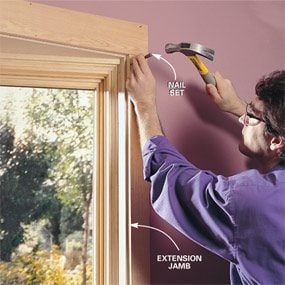
Photo 17: Trim the interior
Cut the interior trim and nail it in place, using a nail set to sink nailheads below the surface of the wood. Apply one coat of finish, fill the nail holes with putty that matches the wood color, then apply a second coat of finish. Our trim and cabinets are Douglas fir, finished with a lightly tinted polyurethane.
Use a wood shim to loosely stuff fiberglass insulation into the thin space between the extension jamb and rough opening. Hang, tape and sand the drywall, then paint it. Recut and reinstall the old interior moldings. If they're not long enough or you're completely redoing the room as we did, install new moldings (Photo 17).
We added a window seat with a hinged top for storage, as well as built-in cabinets to complete the project. This meant adding a 90-degree elbow to the existing floor heat duct and extending it through the face of the window seat. We left the old electrical outlets in the backs of cabinets to power the audio equipment inside.
You're done. Take a bow.
Window Shopping and Planning
We installed an 8-ft. 5-in. x 4-ft. 8-in. Pella Designer Series four-panel bow window. The approximate $3,000 price tag included grilles, extension jambs and flashings. Most major window manufacturers offer bow windows, available with three to seven panels, ranging in width from 6 to 14 ft., and in a variety of heights. Prices start at about $800. Before placing your order, determine whether you can tuck the window under your eaves, like we did.
Our 18-in. eaves easily accommodated and sheltered the 12-in. projection of our window. But if your house has narrow eaves or you're installing the window on an unprotected section of wall, you'll need a roof. Some manufacturers can put you in touch with a prefab roof supplier or provide design guidelines for experienced do-it-yourselfers to build their own. It's a challenging job we don't cover here.
Measure the combined thickness of your wall studs, exterior sheathing and drywall or other interior wall surface to determine the proper depth of your window's extension jamb (Photo 8). A common thickness is 4-9/16 in.: 1/2-in. sheathing + 3-1/2 in. stud depth + 1/2-in. drywall + 1/16 in. of "play" = 4-9/16 in. Include this information when you order your window so the edge of the jamb will be even with the drywall, and your interior moldings will fit flat when installed.
Required Tools for this Project
Have the necessary tools for this DIY project lined up before you start—you'll save time and frustration.
Required Materials for this Project
Avoid last-minute shopping trips by having all your materials ready ahead of time. Here's a list.
Similar Projects
How To Install A Bow Window
Source: https://www.familyhandyman.com/project/how-to-install-a-bow-window/
Posted by: danieltrum1952.blogspot.com

0 Response to "How To Install A Bow Window"
Post a Comment